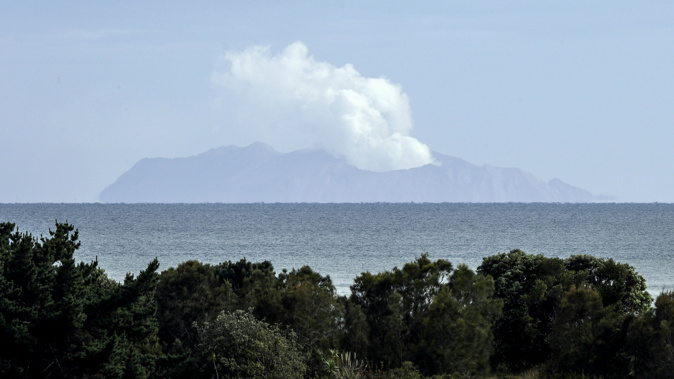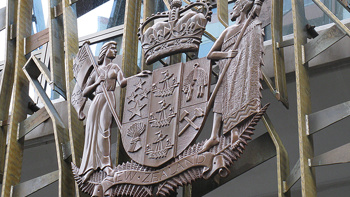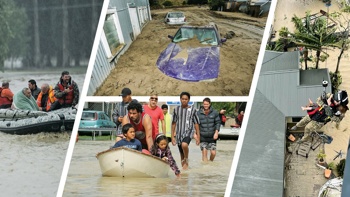
Six months on from Whakaari/White Island's deadly eruption, a fresh batch of magma is believed to have risen up through the volcano and scientists say it could blow again with little warning.
The 2km-wide, 321m-high island volcano – itself the visible tip of a huge structure reaching up 1.6km from the Bay of Plenty ocean floor - has been in a state of unrest since it explosively erupted on December 9, killing 21 people and injuring 26.
On a fly-over last week, GNS scientists recorded a short-lived pulse of gas that had travelled up from the volcano's bowels, and which coincided with a small amount of uplift around its exposed vent area.
"Putting all of those things together, one of the hypotheses is that this has been caused by a new intrusion of a small magma batch, somewhere in the top kilometre below the vent," GNS Science duty volcanologist Dr Craig Miller said.
The detection of increased gas flux – a tell-tale sign of a new batch of the magma at shallow depth – marked a change from previous observations that suggested the volcano was settling down to its typical background levels.
Satellite-based measurements of ground deformation showed the ground around the vent area had subsided by several centimetres since the December eruption.
"However, the most recent data from last week showed a small, localised inflation in the vent area, most likely related to the observed increased gas flux."
Miller said these short-lived pulses were tricky to detect, given scientists could only carry out one measurement flight each week if weather was suitable - and that it still wasn't clear how frequently the pulses occurred.
"We saw something pretty similar in June last year, but then a week later it had gone back down again."
Thermal infrared images taken on the same flight also showed that the lava lobes – extruded globs of lava that were first observed a month after the eruption – were still very hot, reaching temperatures of around 450C.
"We are still observing occasional episodes of slightly elevated tremor, albeit overall tremor levels remain low and within background levels for the volcano," he said.
"An eruption could occur with little precursory activity."
The current state of the volcano also meant fresh magma could move up with few signals at the surface.
"At the moment, where you have got an open vent situation as we have now, where everything is pretty hot, you can slide in a small batch of magma pretty easily."
Miller estimated the batch's volume would measure in the tens or hundreds of cubic metres – small enough not to trigger a flurry of detectable volcanic tremor, but still big enough to cause deformation at the surface if it moved close enough.
"The main message is [the volcano] is still pretty dynamic, and things can still happen on a short time-scale," he said.
"Often what might happen is that you can have a bit of magma that sits there and cooks away … but then there can be a bunch of delayed effects as well, such as the system heating up again."
The volcano was presently sitting at volcanic alert level 2, indicating moderate-to-heightened unrest with potential for eruption hazards - including unpredictable and life-threatening steam-driven eruptions like that of December 9.
"Sometimes we might drop back toward the moderate end of level 2, and other times we are more at the heightened end – but we haven't seen anything that convinces us we are ready to go down to level 1," Miller said.
"Every time we get close to that, we see a little change."
The volcano had been in a generally active state for a decade, over which time there had been several notable eruptions.
"White Island is a very active volcano and this is just what these sorts of volcanoes do."
On average, up to 2000 tonnes of carbon dioxide and up to 800 tonnes of sulphur dioxide rise from the depths of the volcano and hang unseen in the air each day.
Over more than 150,000 years, it has been building towards the sky, the magma chamber inside punching up like a fist and shooting off into fingers that form billowing vents at the surface.
The surface is transformed with every violent episode - what were once multiple large craters, or a huge lake once 90m deep, is now a rock-strewn bowl that's been closed to the public since last year's disaster.
As at this week, all of the eruption victims have been discharged from New Zealand hospitals, but one remains in hospital rehabilitation in Australia.
Take your Radio, Podcasts and Music with you









